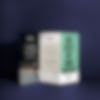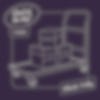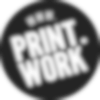


Finding the right show
There are hundreds of shows out there covering a variety of industries and fields. It’s important to know what you want to achieve from exhibiting before you start looking. Are you looking to generally gain more customers or diversify your customer base? Once you know this you’ll be able to search for upcoming events.
Organisers’ sales pitches are always very slick and focused on high visitor numbers, value of the collective budget and calibre of those visiting. Whilst this is a very reassuring pitch, be careful to do your own research speaking with those that have exhibited previously or, if you have time visiting as a punter beforehand! This way you will really get a feel for the event and know if it’s right for your business. Plus it’s a perfect opportunity to scout out the best spot for a stall.

Where is the stand?
The position of your stand can really affect the footfall you get. Always ask to see a plan of the event and consider all the options carefully. Getting in early will allow more flexibility to choose your location.

What do you get for your buck?
Make sure you check whether you’re getting a space only site for you to build on or a shell scheme site where walls and a structure is provided.

Who's exhibiting?
Ensure you are not alongside any direct competitors but also that your offering doesn’t differ wildly from those around you. You want to be group with similar businesses.

Compare quotes.
When comparing quotes for space make sure you weigh up the whole package. One may seem more expensive but might come with more extras. Include travel expenses as well.
Designing your space
Once you’ve signed the contract and booked your space, it’s time to start planning the booth. This is a really important stage that makes the rest of the trade show experience so much easier and straightforward.

Drawing it up.
Make sure you get a detailed plan from your events organiser which tells you the exact layout and position of your stand. This should include the position of any wires, wall posts and lights. Once you have this, it will be a lot easier to design your stall.
We drew up a detailed floor plan of our scheme so we could start measuring up. If you have space, it’s a great idea to replicate it with floor marking so you can get a good feel for the space you are working with. You can then use this space to test out furniture and see how it all sits together in the space.
For a more polished look, we really recommend cladding your shell scheme if you have one. This will hide the generic corrugated plastic backdrop and really make your stall pop. We used a company called shell-clad who provided the perfect solution, clipping into the shell scheme and providing a platform to attach your panels. We used velcro on the shell-clad clips which allowed us to attach sheets of pre-painted MDF.
Top tip: If you’re painting your cladding, use masking tape to cover any joints and paint for a seamless finish.
Can you spot the join in the photo on the right? Hint: it’s slap bang in the middle.


Include a table.
A small table can be used to display items on and for informal chats with prospective clients. We found bar height works really well.

Keep the space tidy.
Use built in storage to hide extra stock as well as staff’s personal belongings. A hidden shelf is handy to keep coffee cups out the way but still accessible.

Display stands.
What is going to show off your products and services in the best way? Think about shelves and stands.

Design portably.
The big one. You need to be able to transport your display quickly and easily so make sure things pack down flat or have wheels on them. Lightweight is key.

Print – why is it so important?
We found that visitors’ attention spans were short and distracted by the sheer amount of different companies exhibiting. Printed material was vital to ensure customers remembered their chat with us and walked away with something they could refer back to after the event.

Business Cards
Show them you mean business with our custom printed business cards.

Booklets
Magazines, photography books, or company brochures— our booklets are the perfect choice no matter the use.

Tri-fold Leaflets
Need that extra bit of room to showcase your promotional material? Check out our tri fold leaflets.
Business cards — A quick way to share your contact details and a quick tag line for your business. Don’t be afraid to leave these lying around as you never know who might pick one up! – We found cards left on our stand overnight, in small piles on every surface around the venue. At PRINT.WORK we have a multiple artwork function which makes it really easy to order business cards for all of your staff.
Brochures — Key to relaying a larger amount of information whilst not bombarding your visitors on the spot, a takeaway means your prospective clients can read up at their leisure!
Tri-folds — Not as chunky as a brochure and not as brief as a flyer. Tri-folds offer that perfect mid level give away with a bit more information while being cost effective. It’s good to offer different levels of free materials for different levels of interest.
Flyers — This is something we missed as we focused on brochures and sample packs! – Flyers are a great way to drum up business as you can walk around the show and hand them out. People are also more likely to pick them up as they’re small and easy to pocket.

Health & Safety
A very dry topic but one that will save you frustration in the future. Our top tip here is to bring hi vis vests for all your staff. This is something we forgot which cost us 20 minutes of our load in time trying to persuade other nice stall holders to let us borrow theirs.


Rules & Regulations
Your event organiser should provide you with load in/out instructions. Be sure to read over these very clearly and don’t be afraid to ask questions if something doesn’t fully make sense. Large scale events come with a lot of detailed rules and regulations. It really helps to understand these before you arrive to avoid any pitfalls.
Check for things like parking permits and restrictions based on your vehicle size.
Time Restraints & Work Environment
Allow at least double the time you anticipate. Queues for load in can take upwards of 4 hours at Excel, load in is incredibly stressful once you have a slot (smaller vans only have 45 minutes to unload their entire cargo so it is really important to organise your van well. Ensure everything you are bringing in is easily transported on a good sturdy trolley. You may have to navigate an entire hall to get to your stand and it is really tricky when everyone else is doing the same!
Much like load in, loading out can be stressful and to avoid getting stuck in any queues make sure you pack up as quickly as you can. We found that taking any unneeded items to the van the night before the last day saved us having to cart lots of things around during load out.
Load in chaos! – keep things as simple as possible, avoid having to build anything large on site, whilst you are setting up, contractors will be laying carpets and building stands around you.

The final stage.
Now you have all the planning in place and your stand is sorted, there’s only one thing left to do… go enjoy yourself and make the most of the experience! There’s so many great people out there to meet so make sure you make time to chat to all of them.







